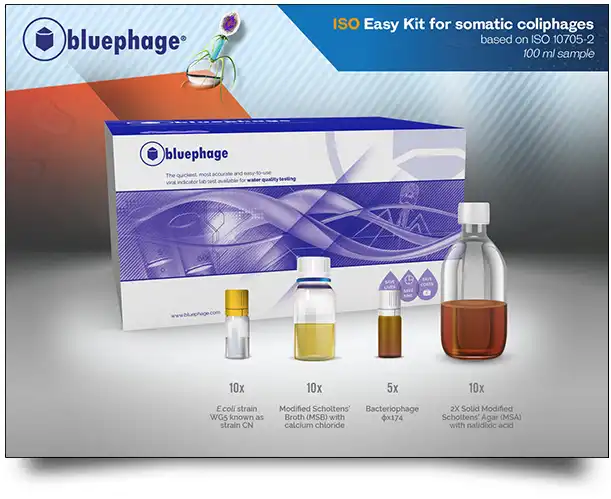BLOG | Bluephage
Climate change modifies the environmental conditions for the transmission of infectious diseases.

Climate change could alter the epidemiology of infectious diseases by interfering in the incidence, although not necessarily an increase, and in the geographical distribution of infectious diseases affecting humans and animals.
The devastating effects of climate change, which could cause a socioeconomic catastrophe of a magnitude and impact that we are beginning to glimpse in recent years, will be the indirect cause of an increase in the incidence of infectious diseases.
According to “The 2022 Europe of the Lancet Countdown” on health and climate change: towards a resilient climate future, changing environmental conditions are changing the environmental suitability for transmission of various infectious diseases. An increasing percentage of coastal waters in Europe have conditions suitable for transmission of non-cholera pathogenic Vibrio, climatic suitability for dengue transmission increased by 30% in the last decade compared to the 1950s, and the environmental risk of West Nile virus outbreaks increased by 149% in southern Europe and 163% in central and eastern Europe in 1986-2020 compared to 1951-85.
Background:
Microbes and parasites are considered infectious agents causing diseases, and history shows three significant transitions in the relationship between humans and these infectious agents.
- About ten thousand years ago, with the settlement and breeding of animals, microbial species caused enzootic infections.
- Two and three thousand years ago, relations between Eurasian civilizations promoted the exchange of dominant infections in each civilization.
- European expansionism in the 14th century led to the transcontinental spread of infectious and often lethal diseases.
Today, in the face of climate change, many experts believe we are in a fourth major transition period.
Climate change effects on infectious diseases
Some of the reasons for the increased emergence and re-emergence of infectious diseases range from genetic changes in pathogens; human susceptibility to infection; climate and weather; changes in many ecosystems; economic development and land use; demographics and human behaviour; technology and industry; international trade and tourism; the discontinuation of some public health measures and the collapse of others; poverty and social inequality; war and famine; and lack of political determination in disease control in some areas of the world.
Before establishing the relationship between microorganisms and infectious diseases during the last third of the 19th century, the influence of climate on human health and infectious diseases was already known. After establishing the specific assignment of each infectious agent to the corresponding disease, some relationships between certain infectious diseases and climate or climatic variations could be observed. In the 1920s, models were used to predict outbreaks or epidemics of infectious diseases using climatic variables such as temperature, precipitation, humidity, and winds.
Many infectious diseases have a seasonal distribution that can occur through airborne, waterborne, and vector-borne transmission and may vary slightly with latitude, widespread increases in average temperatures and increases in extreme weather events could change the incidence and distribution of infectious diseases.
Climate change effects that are most likely to change the incidence and distribution of infectious diseases
Infectious diseases are processes with different levels of complexity involving several factors, and those where only two factors are involved, human and pathogen, may not be affected by climate change. However, in those where more than two factors are concerned, pathogenic microorganisms’ survival and dispersal (mobilization and transport) could be affected for different reasons, depending on the factor affected, such as inanimate vehicles.
Aerosols: Climate change could modify the persistence of infectious microorganisms in aerosols and air because the atmosphere’s temperature and relative humidity affect the persistence of aerosols in air, and temperature, relative humidity, and ultraviolet radiation have an impact on the survival of microorganisms within aerosols.
Climate change may also affect the transport of some aerosols through dust storms, which are expected to become more frequent due to increased desertification in some areas of the planet.
Water. The survival of pathogenic microorganisms in water is also affected by climatic factors, with temperature and radiation being the most critical elements.
However, the increase in average water temperature does not significantly affect the inactivation of faecal-oral infectious agents. An exception would be the cholera-causing vibrio which, unlike the vast majority of faecal-oral microorganisms, which do not multiply in water and die over time; a slight increase in temperature favours their multiplication.
Fomites. Fomites, or passive vectors, play an important role in transmitting respiratory and faecal-oral infections. The survival of pathogenic microorganisms in fomites depends, among other factors, on temperature and relative air humidity. Therefore, climate change could affect the mobility and transmission of pathogens through this medium.
Food. Some pathogenic microorganisms could multiply in food due to the increase in temperature if the necessary precautions are not taken or the facilities required for cold storage are unavailable.
Infectious diseases that may be affected by climate change are usually classified into four major groups:
1) Faecal-oral and thus waterborne transmission.
As for the increase in exceptional events, the incidence of this group of diseases, mainly gastroenteritis, could be increased by climate change. However, a substantial increase in surface water temperature could have the opposite effect, but to a limited extent, except in the case of the cholera vibrio.
2) Transmission via the respiratory route, i.e., through the air.
Infectious diseases of the respiratory tract usually affect mainly the inhabitants of cold countries during the winter months. However, as temperatures rise, their incidence is more likely to decrease.
3) Transmission through hematophagous poikilothermic vectors.
In this group of diseases, it must be considered the change in the distribution of non-human homeothermic hosts, variations in the distribution areas and periods of activity of poikilothermic vectors, and periods of multiplication of pathogens in the vectors.
4) New zoonoses.
The appearance of new emerging zoonoses as a consequence of changes in the area where some of the non-homeothermal hosts live or the substitution of migratory bird routes are considered possible consequences of climate change.
The ability to react to weather emergencies will be determinant to protect public health, and rapid pathogen detection methods in the different transmission routes will be the tools to ensure this safety in time.
Bluephage offers rapid testing kits for faecal and viral contamination in water. With only 6.5 hours and eight simple steps, untrained laboratory staff can perform the Bluephage test and obtain results within the same working day.


